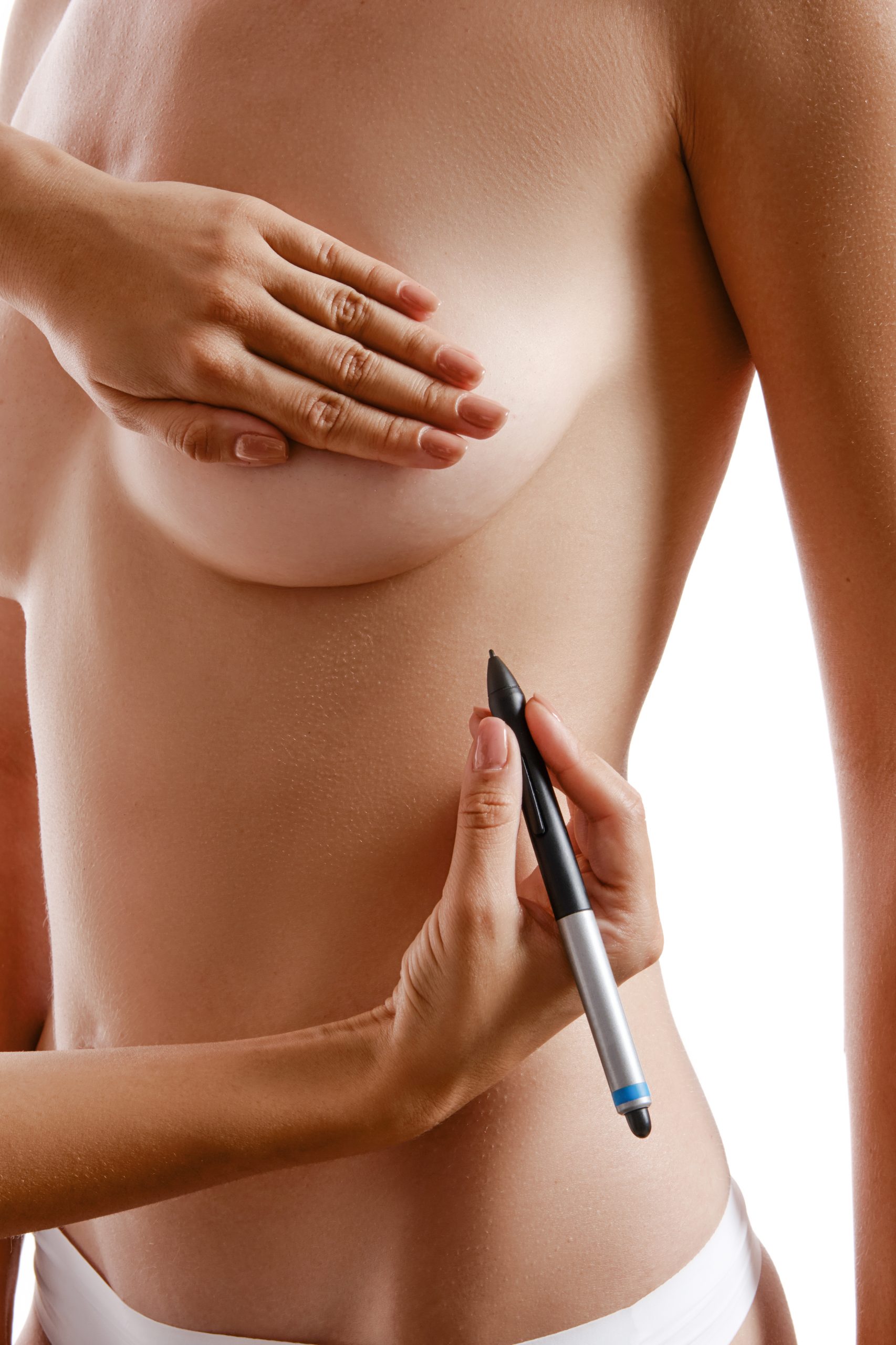What Is Breast Augmentation?
Our Fairfield County breast augmentation, also referred to as augmentation mammaplasty and breast enlargement, is performed for patients desiring an increased breast size, breast shape, volume and position, and/or want to fix breast asymmetry. Breasts can be enlarged with implants or by fat transplantation. Augmentation mammaplasty is not a substitute for mastopexy, which is a procedure to “lift” breasts that sag significantly.
What Are The Different Types Of Breast Implants?
Silicone and saline are the two breast implant types most commonly used in augmentation mammaplasty. Silicone implants feel more like natural breasts than saline ones. However, if a saline implant ruptures, the saline is naturally absorbed by the body, whereas if a silicone implant has an extracapsular rupture (a rupture to the outer capsule), silicone filler leaks into the body, possibly resulting in inflammatory nodules or enlarged lymph glands.
Other types of implants include “gummy bear,” round, smooth and textured.

How Is a Breast Augmentation Performed?
Implants are placed behind each breast, underneath either breast tissue or the chest-wall muscle. The procedure is typically performed with general anesthesia, although local anesthesia combined with a sedative may be used. Incisions are made in inconspicuous places (in the armpit, in the crease on the underside of the breast, or around the areola) to minimize scar visibility. The breast is then lifted, creating a pocket into which the implant is inserted.
Advantages of implant placement behind the chest-wall muscle include a possible reduced risk of capsular contracture (hardening of scar tissue around implant), and less interference during mammograms. Disadvantages include the possible need for drainage tubes, and a longer recovery period. Advantages of implant placement beneath breast tissue include that the breasts move more naturally as the patient uses her chest muscles, and that slight breast sagging is corrected.
Breast Augmentation With Fat Transplantation
Breast augmentation with fat transplantation (fat transfer) uses liposuction to harvest excess fat from other parts of the body; the fat is then injected into the breasts. This method of breast augmentation is appropriate for women who are not looking for a dramatic increase in breast size, and want breasts that look and feel as natural as possible.
For a number of weeks prior to augmentation mammaplasty, tissue expanders may be placed below the muscles of the chest wall to expand the breasts, and increase the amount of fat they can hold. When the tissue has expanded enough, augmentation using fat transfer can begin. First, fat is removed using liposuction, in which a cannula (a thin, hollow tube) is inserted through small incisions, and then moved back and forth to loosen excess fat, which is suctioned out using a vacuum or a cannula-attached syringe. The harvested fat cells are then purified. In the second procedure, which takes place on the same day, the fat is injected into the breast through small incisions. The procedure takes approximately 4 to 5 hours.
Breast Augmentation Risks
In addition to the risks associated with surgery and anesthesia, those related to breast enlargement using implants include the following:
- Capsular contracture
- Implant leaks and ruptures
- Implant deflation or shifting
- Temporary or permanent change in nipple/breast sensation
- Irregularities in breast contour/shape
- Asymmetry
- Partial or total loss of nipple/areola
The risks related to augmentation mammaplasty using fat transplantation include those related to liposuction, as well as the following:
- Calcification
- Fat embolism
- Fat necrosis
- Oil cysts
- Loss of volume
Because of the loss of volume that occurs when fat is reabsorbed by the body, touch-up injections of fat are often necessary. Injections can be performed using local anesthesia.

Recovery From Breast Augmentation
After breast augmentation surgery, drainage tubes may be inserted. Incisions are stitched, taped and bandaged. A surgical bra is typically put over the bandages to minimize swelling and support the breasts. For a few days post surgery, most patients feel tired and sore, but many return to work within a week. Stitches are removed in 1 week to 10 days; postoperative pain, swelling and sensitivity diminish during the first few weeks.
Scars begin to fade in a few months. After augmentation mammaplasty with fat transplantation, recovery time is short, with normal activities being resumed as soon as the patient feels comfortable. Compression garments are typically worn over the areas that received liposuction.
Breast Augmentation FAQs
Schedule a Consultation
If you are considering plastic surgery in Darien or anywhere in Connecticut, contact us to schedule a one-on-one consultation.
722 Post Road, Suite 202, Darien, CT 06820

